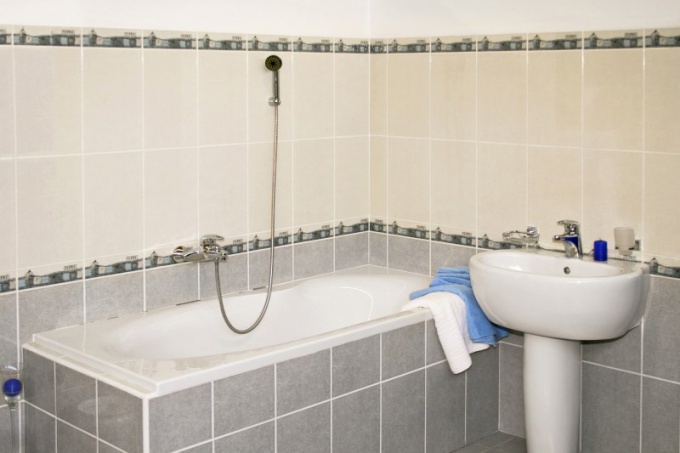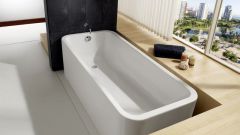You will need
- abrasive stone;
- - acetone;
- - enamel for the restoration of baths;
- glue BF-2;
- - dry zinc oxide;
- - the brush.
Instruction
1
Clean off the old enamel inner surface of the bath. To do this with a sponge or brush apply a cleaning powder that you usually use for cleaning sinks and tile. However, note that this remedy must not contain in its composition of chlorine. Clean the surface covered with powder, using abrasive stone. Carefully, inch by inch, remove the old enamel. The resulting soap film and the abrasive grit rinse with water.
2
Peel all the bumps and rust, degrease the surface. For 10 minutes, fill the bathtub with hot water. Once drained of water, wipe dry the surface of the napped fabric. After all the preparatory works bath should purchase a dry smooth surface with some opacity.
3
Take two part epoxy paint intended for the repair of baths, or enamel, which must be mixed before the hardener, and apply to the prepared surface. Use flat brush with natural bristles. After the first coat let it dry for 15 minutes. Then apply a second coat. Avoid formation of bubbles and stains, otherwise the enamel will soon begin to flake and peel off.
4
For the restoration of the chips, clean them of rust and dirt, wipe with a cloth soaked in gasoline. Degrease with acetone or alcohol and dry the damaged area.
5
Mix the glue BF-2 dry zinc whitewash or "Supercement" - with white nitro -enamelYu until smooth. Brush on three coats of the mixture every 1 – 2 hours.
6
Do not wash again otemalirovannuyu tub cleaning powders, which are, in fact, abrasives, liquid detergents containing acids or solvents. Use a soft sponge or cloth coated with dishwashing detergent or Laundry detergent. Do not expose the surface of the bath paints, including hair. Soaking linen in the reconstructed space ofa bath tub, try not to use bleach.
Note
In the manufacture of emilyrose solutions, carefully read the instructions from the manufacturer placed on the package.

